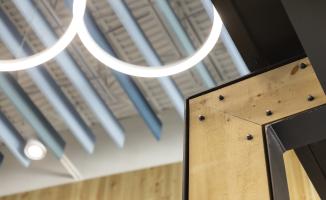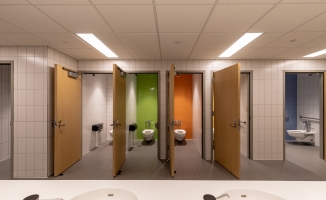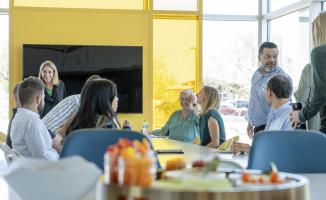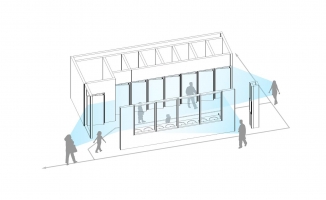Deeper Than June: A Queer Lens on Inclusive Design with Luce James
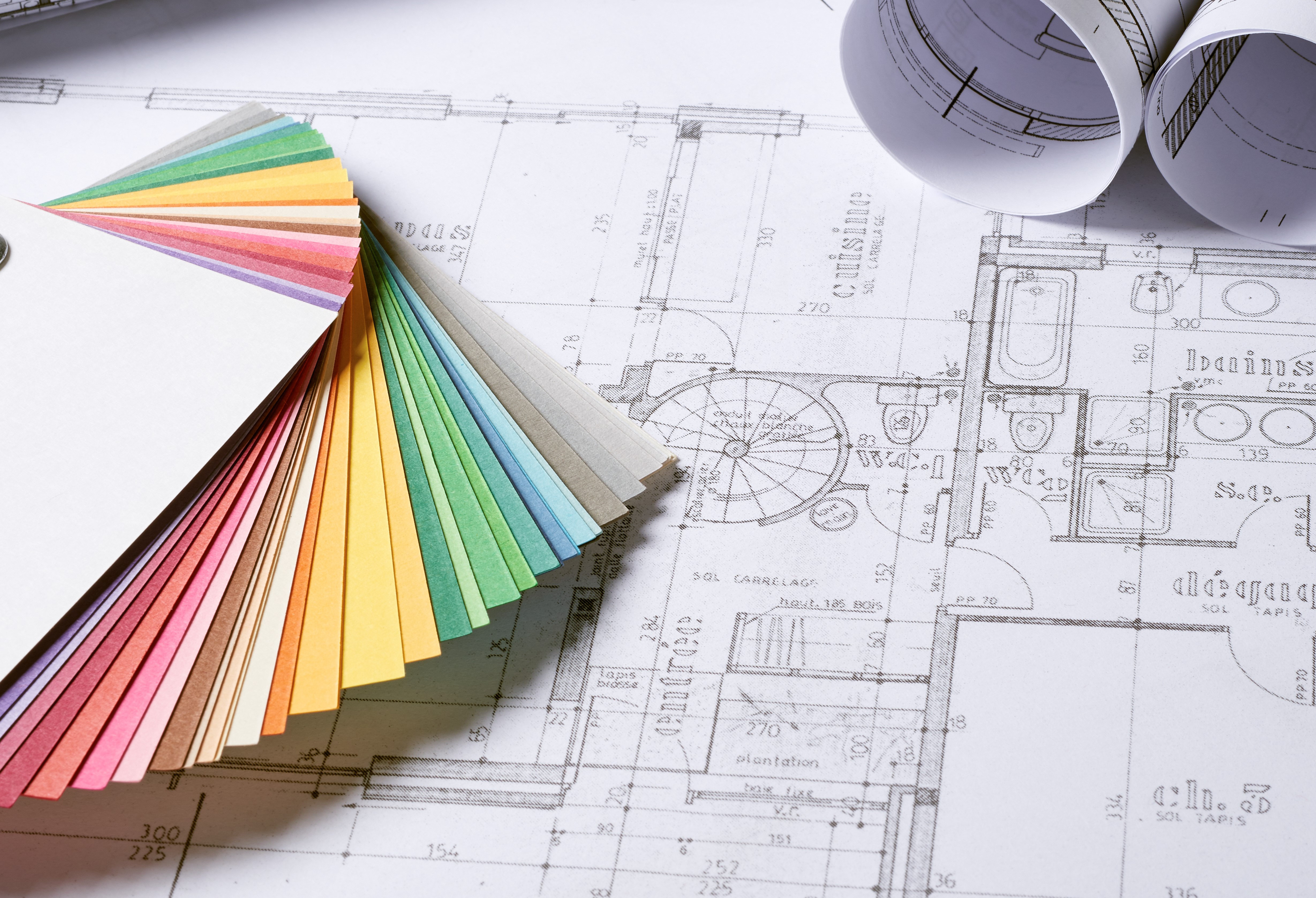
Celebrating June Pride Month at Cuningham means learning and connecting around issues intersecting the LGBTQIA+ community and design to deepen our practice and our commitment to equity.
To help us collectively consider how our approach to design can accommodate queer experiences within the built environment, we welcomed designer Luce James to discuss their research, published in a paper entitled “A Queer Lens on Designing Inclusive Cities.”
Their presentation, “Co-Designing Queer Inclusive Spaces” advocated for architects to prioritize the safety, accessibility and belonging of queer individuals in their designs, emphasizing the importance of collaborating with the community to incorporate diverse lived experiences.
As part of the presentation, Luce led a reflective exercise on queer inclusion and Pride, highlighting the challenges faced by the queer community and encouraging participants to consider their own biases and worldviews. A lively discussion with Cuningham team members followed. Check out the top five takeaways from that discussion:
1. Inclusive Design is Not a Check-the-Box Approach
“It’s really, really, really important to engage with the community you’re designing for. You need to understand their history and present in order to build a good future.”
Luce James
Hiring and building collaborative relationships with people from marginalized communities can help designers gain valuable and nuanced perspective on the needs and desires of diverse groups. Designers must understand the importance of engaging with the community and taking their feedback seriously. More importantly, designers must facilitate engagement that is not a “majority rule” approach, intentionally designing for the most marginalized. Best practices developed from this approach will benefit a wide variety of projects and teams composed of individuals with varying communication styles.
2. Putting the Queer Lens on Building Code
“My highest hope is that we can change the code so that it recognizes the fluidity of gender in a way that is respectful to all.”
Heidi Neumueller, Cuningham Project Manager
One place where the fluidity of gender is not currently recognized is in building code. Cuningham’s Heidi Neumueller discussed her work in education design, where the building code generally specifies a set number of restrooms for males and females. She gave an example of Cunigham’s work with Saint Paul Public Schools, where officials who govern the district’s plumbing code are now open to an inclusive-restroom model. Heidi’s post occupancy study of a high school that uses this model showed that a majority of students perceived the new model as “more safe” than typical, gender-segregated restrooms. Luce echoed this sentiment, suggesting that changes in building codes must also be accompanied by efforts from designers to dispel the harmful social narratives which surround the issue.
3. Moving Beyond Corporate Virtue Signaling
“By putting rainbows out, companies can hide behind them and then not actually do any real work. Unless there’s an intention to create change, then don’t bother.”
Luce James
The commercialization of queer politics is happening alongside a recent rise in hate crimes and anti-queer legislation. Given the cultural implications of this trend, companies—design firms included—must be extra thoughtful in how they are positioning themselves within the queer community. Don’t use rainbows to appear queer-friendly without actually doing any work to support the community, as this will just obfuscate the problem.
4. The Intersection of Queer Design and Sustainability
“A lot of marginalized groups are disproportionately affected by things like climate change and environmental hazards.”
Luce James
A significant challenge when designing for sustainability in marginalized communities, including the queer community, continues to be the lack of resources and disproportionate effects of climate change and environmental hazards. Designers must recognize the importance of centering disadvantaged groups in solving the problem of environmental justice to create sustainable environments for generations to come.
Further, many marginalized groups can feel unsafe in nature, thus barriers to entry must be considered and designed for in terms of making natural environments inclusive. Luce referred to their work at IIT Institute of Design with Chris Rudd of Chiby Design aimed at increasing BIPOC access to Chicago’s forest preserves.
5. Advice for Queer Designers
“Surround yourself with people who listen to you and care about what you’re saying.”
Luce James
For queer designers, it’s important to find supportive people in order to avoid burnout. It shouldn’t be your responsibility to educate everyone on everything—be strategic on which battles you pick. When you do insert yourself, make sure you can articulate your specific perspective as a queer person—be prepared to discuss why things can and should be different. That said, be sure to still understand your individual biases and take them into account.
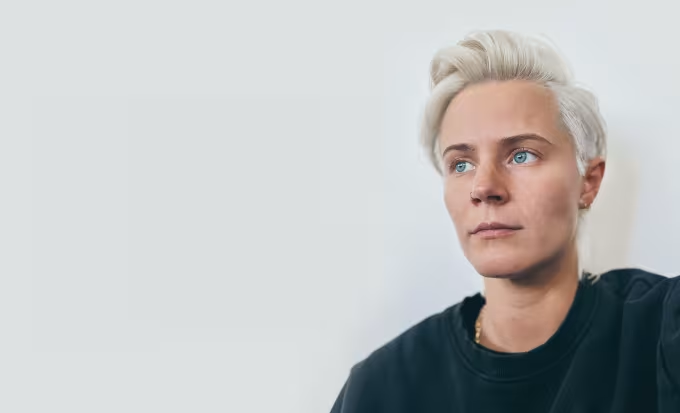
About Luce James
Luce James is a UK-born designer with a Master of Design degree from the Institute of Design in Chicago, specializing in social innovation, civic design, and Queer design. They have worked on projects that tackle systemic barriers and promote inclusivity – Luce was part of a team that co-designed anti-racist pathways to nature with the Chicago BIPOC community and the Forest Preserve of Cook County, aiming to ensure equitable access to green spaces for BIPOC communities. Their work reflects a commitment to dismantling inequities and creating more inclusive urban environments. They strive to create a more equitable and compassionate world where design is a catalyst for positive change, whereby communities shape their own futures.
Check out additional content below about Cuningham’s work on Trauma-Informed Design and Inclusive Restrooms Models. Interested in learning about opportunities to bring your lived experience to our team? Reach out!
